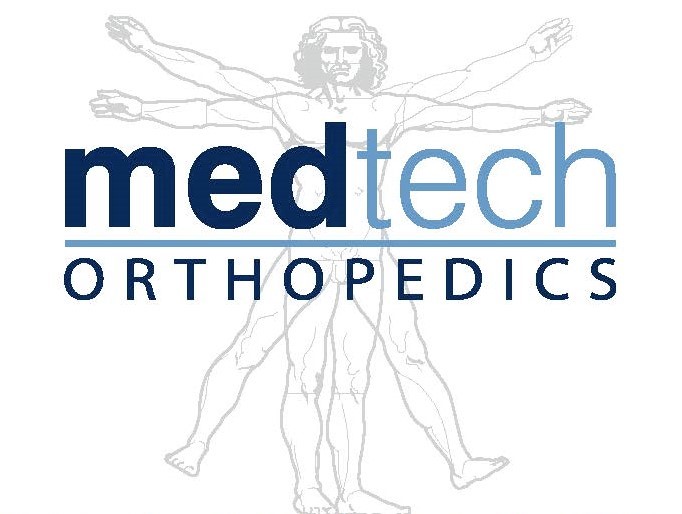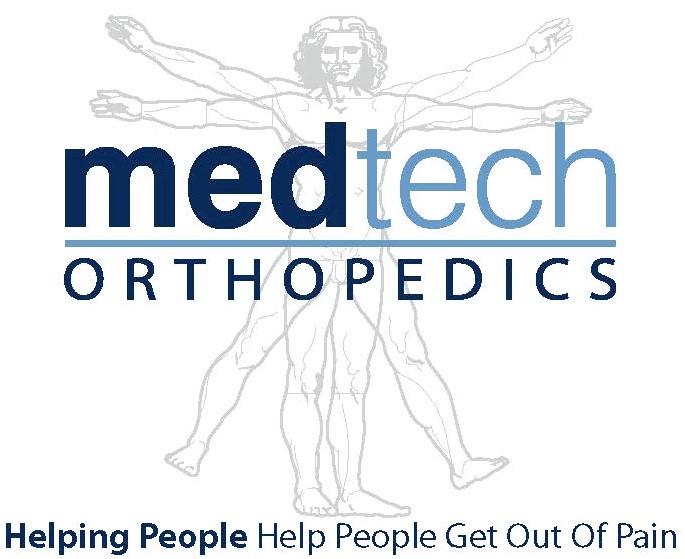
help people get out of pain
Medtech Orthopedics provides patients and healthcare providers access to orthopedic braces and devices that can help patients to achieve their therapeutic goals of improved function, mobility, and independence. We offer non-surgical, non-drug, and non-invasive alternatives to pain relief.
Our Commitment
Mobility is Indepence is the defining statement of Medtech Orthopedics. Whether we are dealing with chronic pain, acute injuries, or complications of neurological or post-operative conditions, our goal is to assist every patient and clinician with our clinical expertise and innovative devices in order to improve the patient’s mobility. Pain reduction, improved stability, patient confidence, and better biomechanics all increase activity and mobility, thereby enhancing a patient’s probability of rehabilitation and improved quality of life.
Our Goal
Our goal is to ensure that all patients in need are assessed and provided for in the most efficient and convenient manner possible. The products and services we offer are shaped by the feedback we receive from both patients and providers. Whether you are the patient or the ordering provider, we strive to meet your needs and reach the best solution. This includes free in-office or at-home assessments and deliveries by our highly knowledgeable, mobile staff clinicians.
Our Coverage





Frequently Asked Questions
The term “orthotic” can refer to almost any device which is worn inside a shoe. Items called “orthotics” are available from physicians and other medical professionals, in shoe stores, in infomercials, retail stores and even at trade shows. There are three very different types of “orthotics” – custom, customized and off-the-shelf. The educated consumer should be aware of each type.
AFO stands for Ankle and Foot Orthosis (or Orthotic). It is a specialty category of medical devices designed to protect and support the entire foot and ankle joint region, while increasing function and independence for patients who have various conditions afflicting their lower extremities. AFO’s are prescribed by physicians and practitioners as a way to increase mobility, avoid pain, avoid surgery, and provide a better quality of life for their patients. A Custom AFO is a type of AFO that is designed to offer superb control for the foot and ankle while offering greater comfort and easier shoe fit than other braces. It is custom made for your foot and ankle and combines a custom foot orthosis with an attached semi-rigid ankle brace that controls the motion of the ankle joint and both of the major joints of the foot.
Custom functional foot orthotics are prescription medical devices made from non-weight bearing molds of your feet. They are designed to control alignment and function of the foot in order to treat or prevent injury-causing force on bones, joints, tendons and ligaments. Often they are used to limit motions such as excessive pronation (rolling-in) and excessive supination (rolling-out). They also act to make activities such as running, walking – even standing – more efficient. They can act to redistribute pressure on the bottom of the foot to relieve pain from excessive pressure or calluses. The reason a custom orthotic is typically the recommended choice of physicians is that they fit so well, reducing the opportunity for various problems to occur. Custom devices are “form-fitted” to a patient’s foot and they “hug” the ankle, thereby eliminating gaps, looseness, or creases that could decrease effectiveness or create “soft spots” or imprints in the patients’ skin. This is extremely important regarding diabetics and/or patients with tender skin. The better, tighter fit also allows the orthotic device to fit comfortably inside a shoe.
This is a very involved subject and too much to get in to here. But in general, most foot pain is the result of a faulty relationship between the bones and muscles of the foot. Even the slightest misalignment can result in significant discomfort. This abnormal function can result in problems such as bunions, hammer toes, arch and heel pain, corns, knee pain … even back pain. The function of custom orthotics is much more than an arch support. Orthotics realign the structures of the foot and leg to prevent bone mal-alignment as well as muscle, tendon, and ligament fatigue. They are often used after surgery to help stop the recurrence of foot deformities. As your foot rests on a properly constructed custom orthotic, it is gently and consistently directed into the correct position (or at least a better position) for walking, running, and standing. Because your foot is now functioning properly, the pain of muscle strain and pressure points is relieved, and the progression of deformities is often stopped or slowed. Custom Foot and Ankle Orthotics are also used for patients with balance and gait impairments. By encompassing the entire ankle and foot region, these devices work to keep everything in proper alignment, allowing the patient to simply concentrate on foot placement and gait. These devices are often referred to as “Balance and Gait Trainers” as they are often used by therapists to re-train their patients in proper walking techniques. The combination of an AFO with therapeutic training can drastically increase a patient’s confidence in walking, and thereby significantly reducing the amount of time it takes to improve their balance and independence.
Another type of foot orthotic is known as “customized” rather than “custom.” These devices can be difficult to distinguish from custom foot orthotics and, unfortunately, are sometimes marketed as authentic custom foot orthotics. They are often the product of a computerized system where the patient is asked to walk across a force plate which then shows pressure distribution on a computer display. Typically, the orthotic is made by adding extra components to a premanufactured insole. Sadly, patients are often told that these are custom – and charged a custom orthotic price. So how can you tell the difference between customized orthotics and authentic custom foot orthotics? If you are receiving authentic custom orthotic devices, a three-dimensional mold of your foot, using plaster or fiberglass, must be taken. Walking or standing on a force plate can be used to evaluate some aspects of foot function, but a force plate cannot capture the 3-dimensional impressions of your feet that are necessary for best outcomes. Remember, if there is no cast, it can’t be a custom orthotic.
Yes. Your primary or attending physician or podiatrist will need to write you a prescription for these devices. There is a very labor intensive process involved in creating these devices and suppliers will need an order before beginning construction of any device.
Depending on the healthcare provider and the manufacturing company used, this process typically takes between 2-4 weeks due to the labor intensive process. Ask your healthcare provider when you can expect to have your devices delivered to you for fitting.
Typically, yes. Medicare part B pays for these devices as long as you have an appropriate doctor’s prescription and a medical condition that requires such a recommendation. Conditions vary from Posterior tibial tendon dysfunction to lateral ankle stability with difficulty in walking. Your healthcare provider will know the appropriate conditions and coding for the devices. Private insurances will typically pay for these devices as well, though sometimes requiring a pre-approval. It is the responsibility of your healthcare provider to understand this process and guide you in taking the necessary steps to achieve pre-approval status with your insurer.
Your healthcare specialist should work with you to ensure that your orthotics are comfortable and are relieving your symptoms, and he/she should explain to you appropriate steps to take to break-in your devices and shoes over the first few weeks of wear. They should also provide you with detailed information on the proper shoes for your feet. This will help you find appropriate, comfortable, and fashionable shoes.
Yes. One of the most important parts of orthotic therapy is appropriate follow-up. If you have a problem with orthotic fit, function, comfort, shoe fit or any other issue, your healthcare provider must be able to diagnose and correct these concerns. This is why a skilled, knowledgeable and experienced practitioner or orthotic fitter can usually provide the best clinical outcomes


